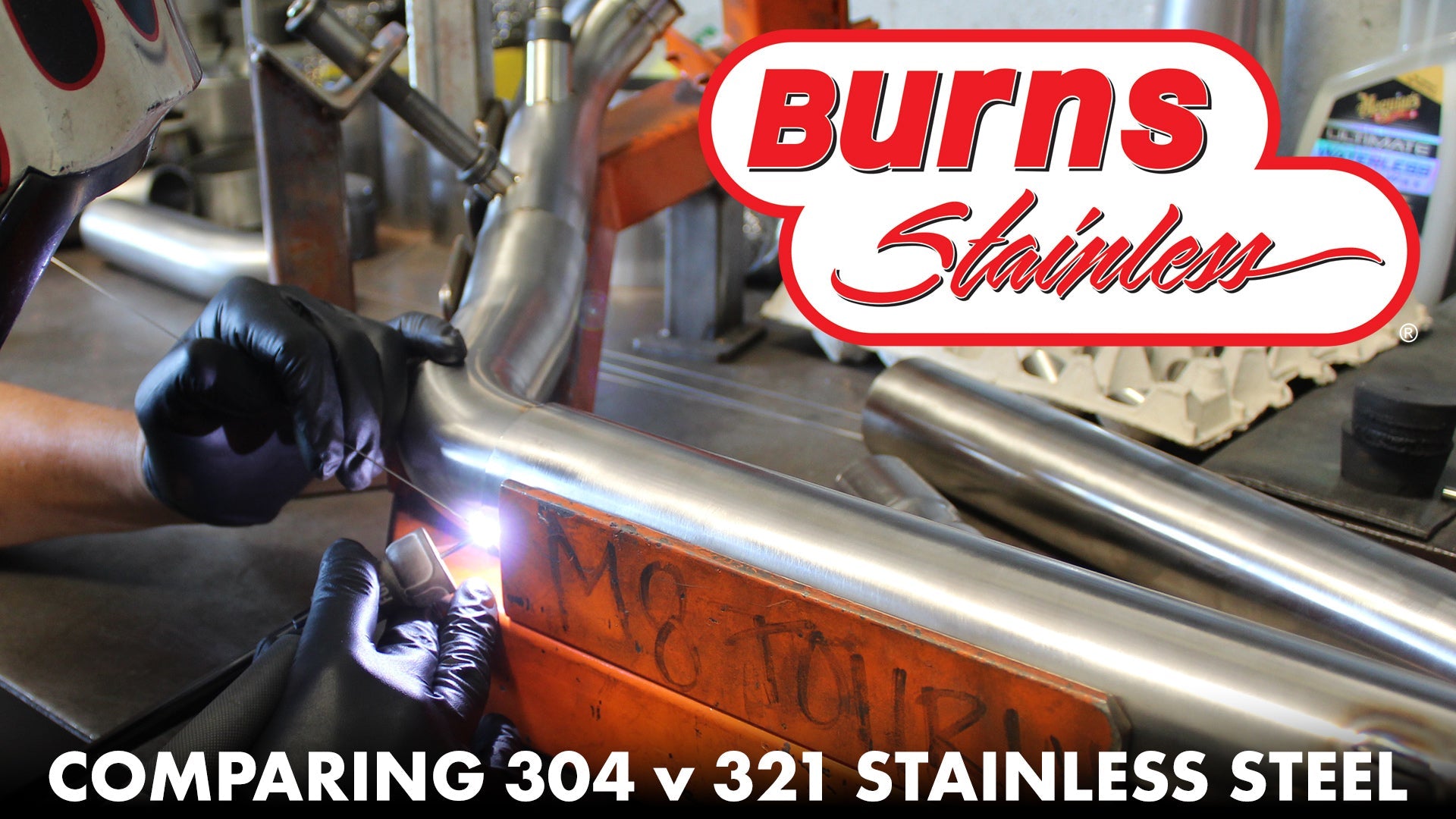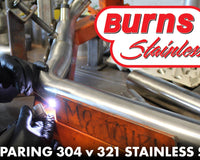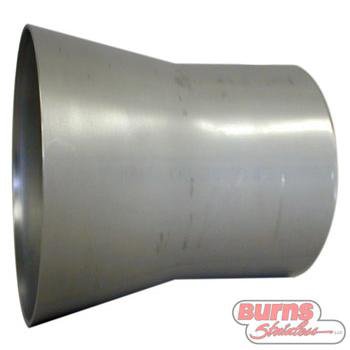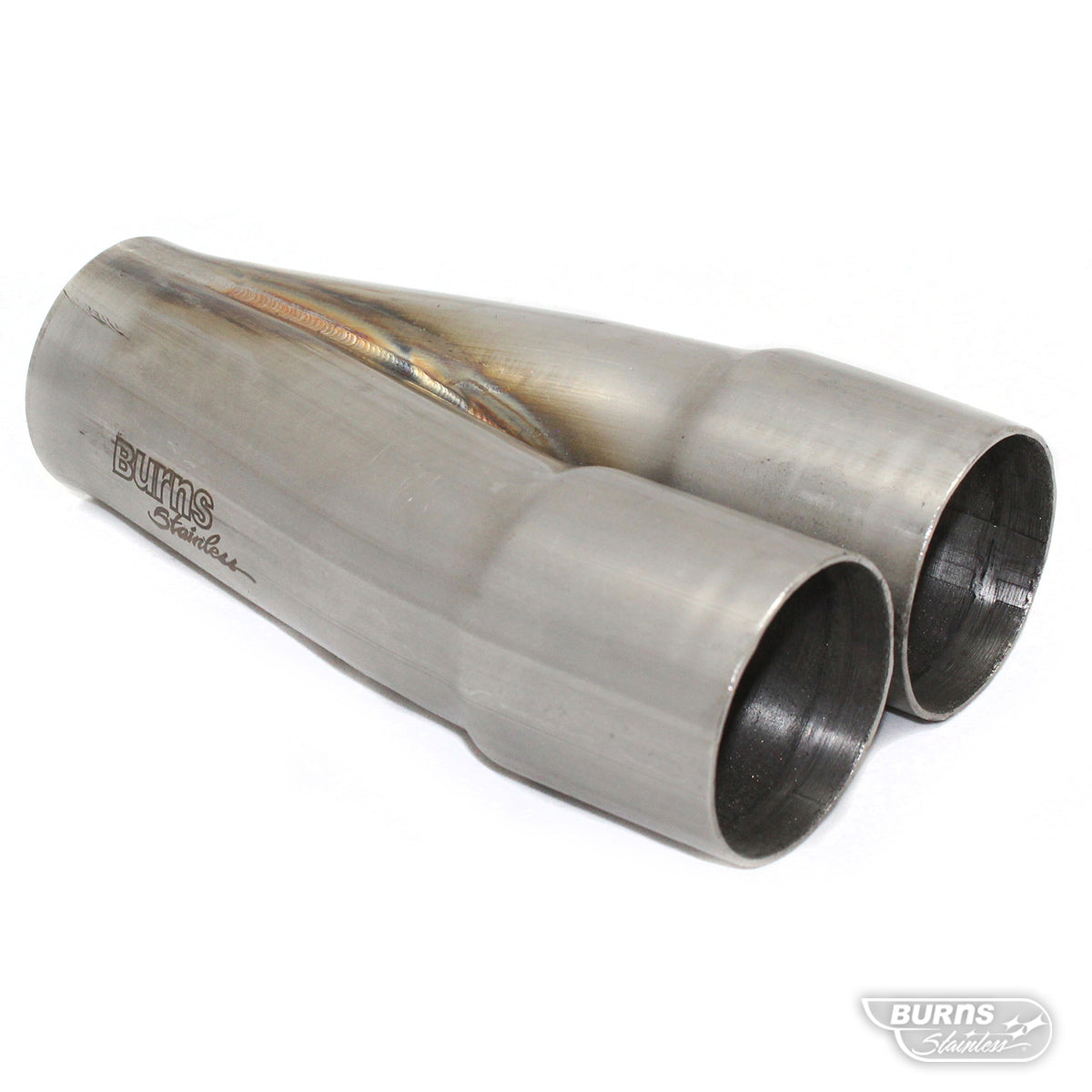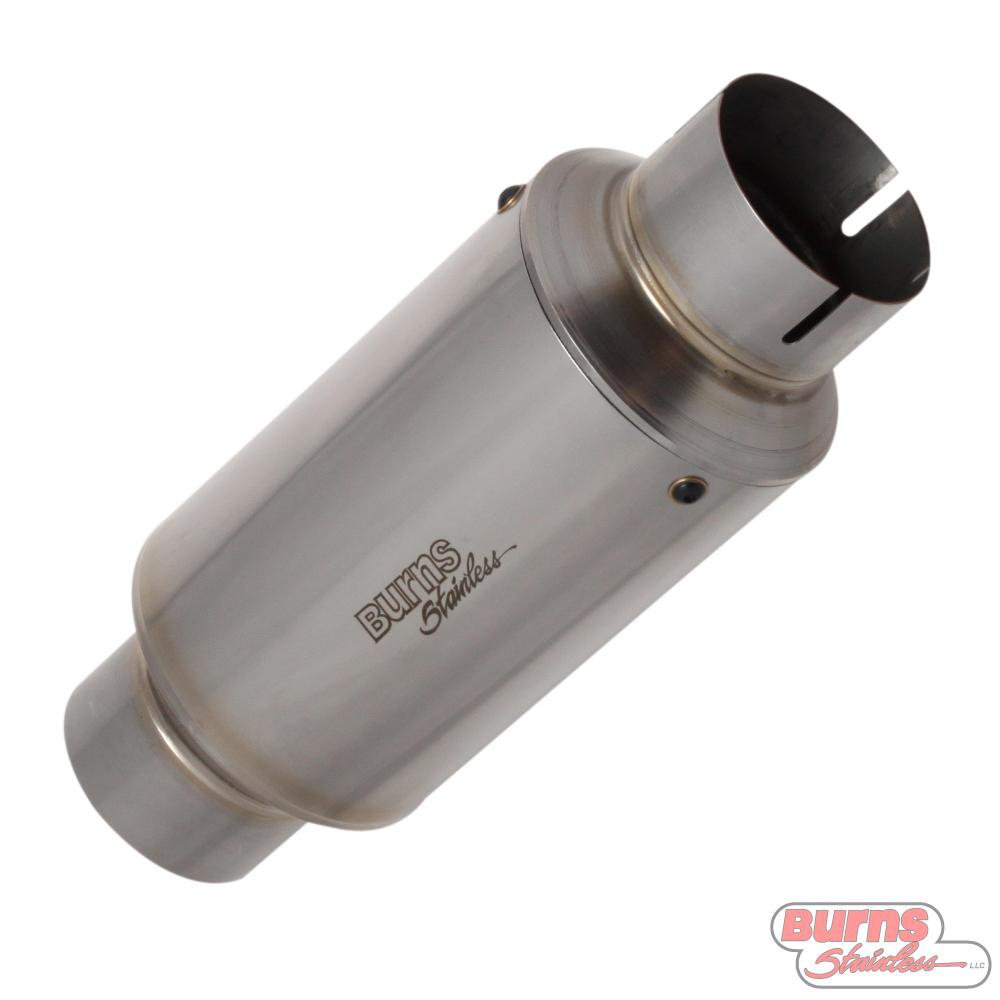Stainless steel is a material that we wish never was labeled "stainless" because it can do so much more than simply resist rust. The origins of stainless steel date back to the early 1900s when an English metallurgist developed a type of steel for making knives that would not rust.

Technically, "Stainless Steel" is strictly a trade name applied to what are known as corrosion-resistant steels. It is a fabulous material that outperforms mild and alloy steels in so many different applications in racing that no other material can match it, and all racers should consider it as a vital element in their fabricating efforts. However, stainless steel does have some unique properties that the fabricator needs to know about before launching into a project.
An interesting characteristic of many types of stainless steel is that they are non-magnetic, a quality that makes them very important in the aerospace industry. Compared to mild steel, stainless steel has superior high temperature characteristics. It is an excellent material for headers and exhaust systems, or any application where high heat is encountered.
Stainless steel is similar to mild and alloy steels; it is an alloy of iron that contains at least 12% chromium. This high chromium content retards corrosion giving the steel its "stainless" quality. There are many alloys of stainless steel, which are broken down into two basic categories:
-
Chromium-nickel grades
-
Straight chromium grades
The chromium-nickel grades are the more common stainless steels used in race car fabrication compared to the straight chromium types, due to the nickel content which provides excellent weldability and corrosion resistance. Also, this nickel improves some mechanical properties such as fatigue strength, toughness and ductility. People sometimes refer to stainless steels based on their chromium and nickel content: for instance, 18-8 stainless has 18% chromium and 8% nickel in it.

Stainless steel typically has a rather low carbon content, in the range of .08% to .15%, and sometimes as low as .03%. The carbon is needed for hardness, but it also can cause the stainless to become susceptible to corrosion at high temperatures. What happens is this: when chromium-nickel steel is heated to a temperature range of 800° to 1590°F, the carbon in the steel combines with chromium to form chromium carbides. This transformation is called carbide precipitation and reduces the corrosion resistance of the steel. The chromium is reduced in this heat-affected area and makes the steel subject to what is known as intergranular corrosion. Some stainless steels are known as low carbon grades to minimize this carbide precipitation; others, such as 321, are special alloys that reduce carbide precipitation by combining and stabilizing the chromium at elevated temperatures.

You may have heard Smokey Yunick talk about maintaining high exhaust velocity and increase scavenging by covering headers with a thermal wrap. In addition, there are companies that coat headers with a thermal barrier, typically some type of ceramic formula, in order to keep the heat inside the exhaust system. Stainless steel performs this function without the need for add-ons because it has a much lower coefficient of thermal conductivity, thereby keeping more heat inside and transmitting it to the header outlet. Radiated heat is perhaps the most important reason to wrap or ceramic coat the headers to protect the car and the driver from excessive, fatiguing high temperatures.
Typical 1010 carbon (mild) steel conducts 219% more heat per foot than do the types of stainless steel we use in header fabrication. By contrast, quite a bit more heat stays inside the stainless header tubes and does not get passed into the surrounding air. By not allowing the contraction of the cooling gases as they flow down the tubes, more exhaust velocity is retained which promotes better scavenging at the collector. This retention of velocity increases the overall header efficiency.

You've probably seen Indy cars with their enclosed engine compartments and thermal clam-shell enclosures around their turbocharger headers. They must thermally wrap their exhaust pipes just so the radiant heat off the tubes won't cause fires or melt any critical systems. In this case headers made out of mild steel would completely fail and break apart due to the severe heat retention, let alone scale and send death particles into the turbocharger, ruining the turbine blades. 321 stainless steel tubing has excellent high temperature fatigue resistance in this enclosed application and does a darn good job of living in this hostile environment better than any other material except the ultra-high nickel content steels ( such an Inconel ), which are hard to find, very difficult to work with and extremely expensive.
These many characteristics, such as superior heat retention properties, high temperature fatigue resistance, and to a lesser extent, the cosmetic value of a non-rusting finish, combine to make stainless steel an ideal choice for headers and exhaust systems. Such a system will produce more horsepower and last "'til the cows come home". It is an excellent solution. Now that you are sold on the merits of stainless steel, there are a number of things you need to know about the different types available before you launch into a header and exhaust system project.
A three-digit numerical classification system is used throughout the industry. The racer needs to be familiar with only one of these three-digit series within the system - the 300 series. They offer the fabricator a wide array of choices, from ornamental quality up through the highest-temperature and closest-tolerance aircraft quality.
Within the 300 series of stainless steels, there are four types that are suitable, available and cost effective for the racer. These are 304, 316L, 321, and 347.

321 and 347 are known as stabilized grades of stainless. These are alloyed with either titanium (321) or columbium (347), both of which have a much stronger affinity for carbon than does chromium at elevated temperatures. This eliminates carbide precipitation leaving the chromium where it belongs for corrosion protection...remember our discussion of intergranular corrosion? Both 321 and 347 are top choices for exhaust headers, especially turbocharger systems and rotary engines. Since 321 is much more available than 347, that leaves 321 as the first choice, with no sacrifice in needed qualities.
316L is an extra low carbon (ELC) grade of stainless that has only .03% carbon, making less carbon available to precipitate with the chromium. It is used extensively in marine exhausts where salt water corrosion mixed with diesel exhaust particulates and electrolysis create such a horrible environment that even other grades of stainless cower and run away!
304 is the most inexpensive and available stainless in the 300 series. It is suitable for normally-aspirated header applications, and has been successfully used by many racing teams. It does not have the high temperature fatigue resistance that 321 does, but is considerably less costly and much more available. Most 304 tubing these days has the dual designation of 304/304L.
Practically speaking, there are overlapping applications of 304 and 321 stainless in header construction, but knowing you've got the insurance of the aircraft-grade 321 for the job is definitely worth consideration of the extra cost... if your application requires it.
Stainless steels come in both tubing and pipe sizes. Since certain pipe sizes are almost identical in dimension to tubing sizes, pipe may sometimes be substituted for tubing, and vice versa. Numerous wall thicknesses are available, but for headers, normally .049" (18-gauge) to .065" (16-gauge) is used.
Different specifications are used to meet particular requirements for the military (MIL), the American Society of Testing Materials (ASTM), and the Society of Automotive Engineers (SAE). Examples of what to look for when you order stainless tubing are as follows:
ASTM A-554 304 stainless is a welded mechanical tubing used primarily for ornamental purposes. It is not fully annealed and is work-hardened slightly in manufacturing. It has good column strength and good bendability.
ASTM A-269 304 stainless is a general service commercial specification that is higher quality and is fully annealed for better ductility. It is available in both welded seam and seamless, and is a good spec for the racer to use. We have not seen any difference in longevity between welded seam and seamless stainless tubing in header use, but there is a substantial cost difference. A249/269 has better dimensional tolerances, higher pressure rating and excellent bendability. Some header manufacturers successfully use A554, but A249/269 is the better choice.
MIL-T-8808/8606\MIL-T-6737 321 stainless are military specifications for aircraft tubing. Suffice it to say that some MIL-specs are not necessarily better or even as good as some ASTM standards. There is no particular magic here.
There are as many uses for stainless steel as there are projects in the shop. There is nothing else that transmits an image of quality and skill to the majority of fabricators than a cleanly constructed stainless steel project. Whether it is a set of headers, intake stacks, or even a stand for one's dyno engine cooling fan, stainless steel has such great mechanical properties that its use should be considered for many projects beyond exhaust systems.


